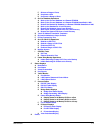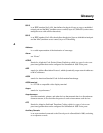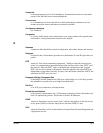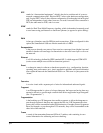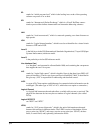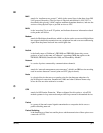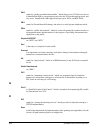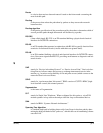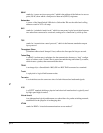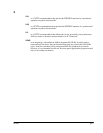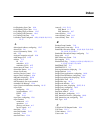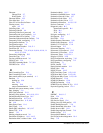
Glossary glo-7
M
MAC
stands for “medium access control,” which is the second layer in the three-layer ISO
LAN protocol hierarchy. (The first layer is Physical and the third is LLC; LLC is
described in this glossary.) MAC supports medium-dependent functions, and uses the
services of the physical layer to provide services to LLC.
M-Bit
is the “more data” bit in an X.25 packet, and indicates that more information related
to the packet will follow.
Modem
stands for Modulator-demodulator, which is a device used to convert serial digital data
into a signal suitable for transmission over a telephone line and to reconvert the analog
signal from the phone line back into serial digital data.
N
Netlink
is the family name of Cabletron’s FRX4000 and FRX6000 frame relay access
products, as well as the name of Cabletron’s proprietary MIB that applies to the
FRX4000, FRX6000, SmartSwitch 1800, and Frame Relay Module.
Network
is a series of points connected by communications channels.
NMVT
stands for “network management vector transport,” which is an IBM service encoding
used in sessions between a control point and a PU (physical unit).
Node
is a physical device that acts as a transfer point for data between endpoints of a
physical/logical connection. SmartSwitch 1800s and other Cabletron frame relay
access devices are often referred to as nodes.
O
OPX
stands for Off Premise Extension. When configured for this option, a voice/FAX
module operates in loop start mode and provides loop current to the attached device.
P
Packet
is a group of data and control signals transmitted as a composite whole across a
packet-switching network.
Packet Switching
is the breaking up of data into smaller pieces and the transmission of these pieces over
a network via X.25.



